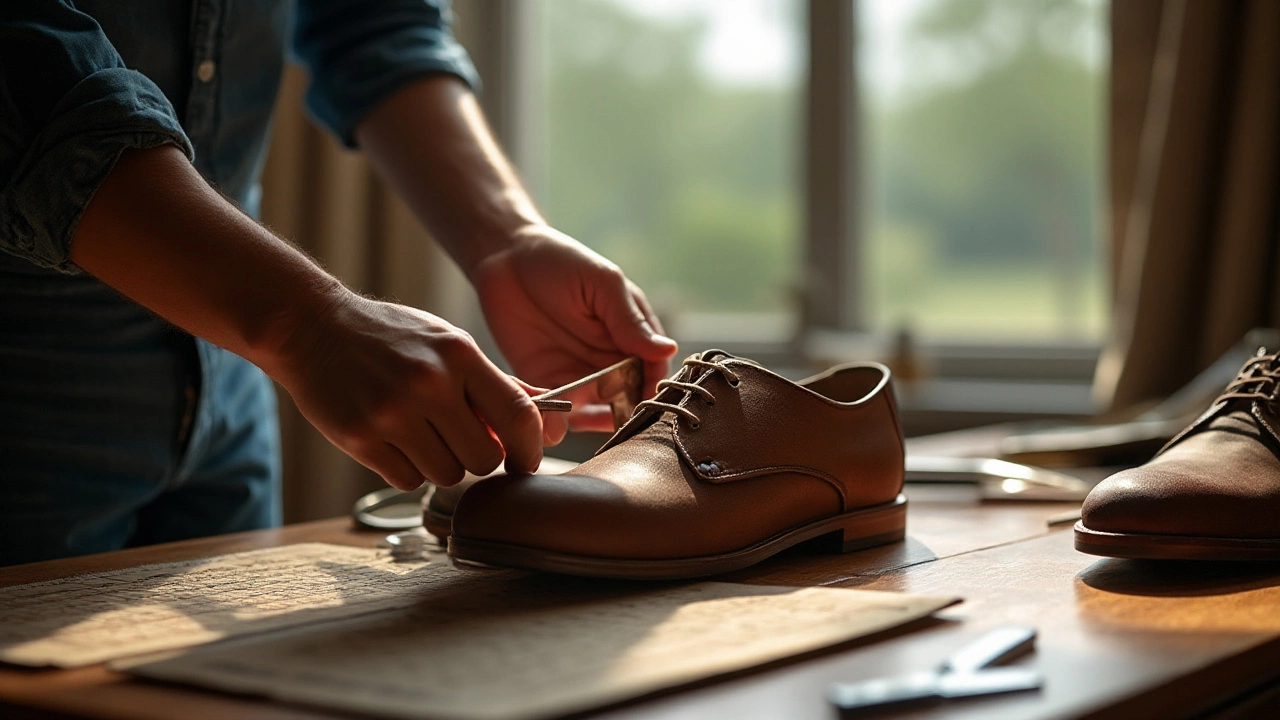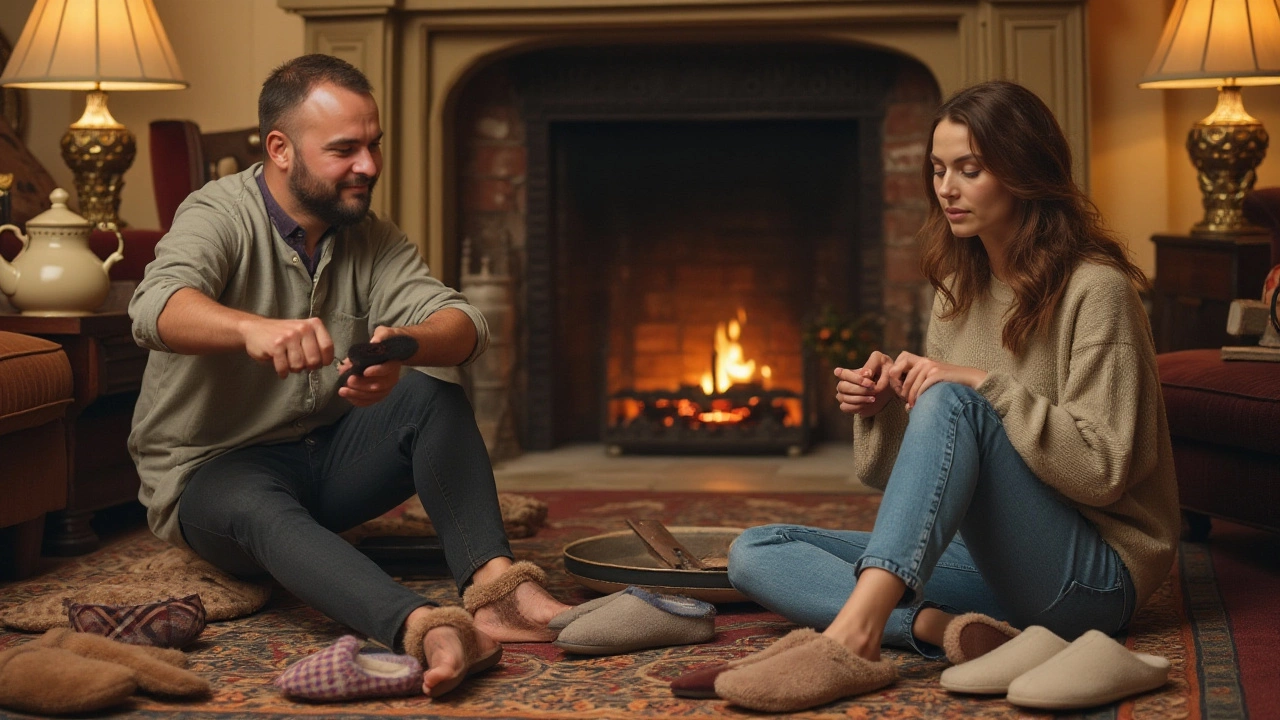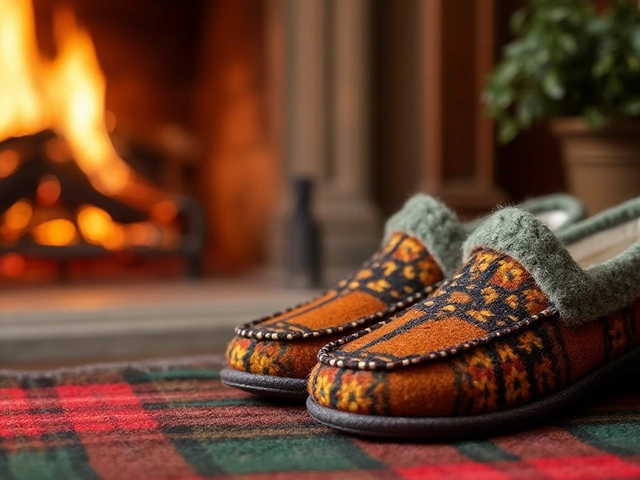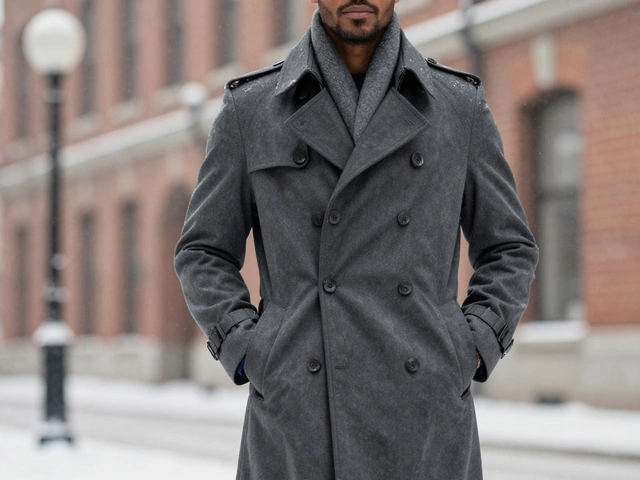When it comes to picking out slippers, you might assume that they're sized just like your regular shoes. But is it really that straightforward? Many people discover that slipping into the perfect pair of slippers requires a bit more know-how—particularly when slipper sizes often don't match up exactly with shoe sizes.
In the journey to find the ideal slipper fit, understanding sizing differences is key. Slippers serve various purposes and come in a range of styles, from cozy house shoes to outdoor walking slippers, each impacting the sizing game a little differently. This article sheds light on how and why slipper sizes might diverge from conventional shoe sizes, and what you can do to ensure you get the right pair.
- Understanding Footwear Sizing
- Differences Between Slipper and Shoe Sizes
- Factors Influencing Slipper Sizing
- Common Sizing Mistakes to Avoid
- Tips for Selecting the Right Slipper Size
- How to Measure Your Feet for Slippers
Understanding Footwear Sizing
When diving into the world of footwear sizing, it quickly becomes clear that it's not just numbers and letters on a chart. It's a landscape influenced by tradition, regional variances, and the unique interplay between art and science. Slipper and shoe sizes, although seemingly similar, can vary dramatically because of these factors. Historically, sizing systems evolved by region, leading to the current divergence we've come to know today. For instance, European sizing uses a different metric compared to North American or Asian systems, each employing unique baselines and increments that can leave consumers baffled when shopping internationally.
A frequently overlooked detail is that sizes are often built on a general last, which is essentially a mold that shoe and slipper sizes are based on. Manufacturers create their products using these molds, but not all lasts are created equal. This leads to variations in fit even among brands using the same sizing standard. If you've ever worn a size in one brand but found it too tight or too loose in another, this discrepancy might be the culprit. Comprehending these differences can make shopping more intuitive and less frustrating.
Understanding Different Sizing Systems
The UK, for example, is notable for its half-size increment system, offering more precise fitting options compared to many others. The US similarly offers half sizes, with a distinctive deviation of about 1.5 sizes between male and female footwear. Then there is the European system that typically skips smaller fractions, offering full-size steps. These systems' diversity illustrates how crucial it is to delve beyond a mere number, verifying the measurements they represent.
Cathy Campagna, a footwear designer, once noted, "Footwear sizing is as much an art form as it is a measurable science. The nuances of foot shape, coupled with the materials used, require a delicate balance to achieve a true fit."This artistic aspect becomes clear when you consider that a size ten in sneakers versus loafers can fit differently due to the nature and purpose of each shoe style. Material flexibility, toe shape, and intended use all feed into these differences.
Let's not forget that materials play a critical role too. Leather, fabric, or synthetic components each have distinct properties, influencing how a slipper or shoe adjusts and conforms to the user's foot over time. Certain materials, like leather, are known to stretch and hence might necessitate a snug initial fit, whereas synthetics often lack such flexibility. Knowing the material details can assist greatly in choosing the right footwear sizing, whether for slippers, boots, or sneakers.
Practical Tips and Tricks
Modern consumers can take advantage of online tools and resources to navigate this complex sizing world. Many websites now offer sizing guides, conversion charts, and customer reviews emphasizing fit, which are invaluable aids when making a purchase decision. Notably, online retailers often post detailed dimension charts including foot length and width recommendations, helping to mediate the intricacies of international shopping. Instead of solely relying on size, focusing on the physical measurements that charts provide can streamline the process.
To sum it up, understanding footwear sizing is more than matching a number to your foot. It's about translating sizing systems, considering material properties, recognizing brand-specific quirks, and ultimately leveraging these insights to make an informed purchase. Next time you slip into a pair of slippers or shoes, know there's a rich tapestry of facts that have guided you to the perfect fit. The knowledge of footwear sizing nuances makes all the difference, ensuring comfort and satisfaction in every step.
Differences Between Slipper and Shoe Sizes
When it comes to footwear, the journey from sleek leather boots to soft cashmere slippers isn't just a leap in style—it's a step into a whole new world of sizing considerations. The main reason why your slipper sizes may not align perfectly with your shoe sizes boils down to design intentions. Slippers are primarily designed for comfort and ease, often resulting in a looser fit compared to your standard shoes. Manufacturers recognize that slippers are likely to be worn at home, which allows for a more relaxed approach to fit and structure.
Unlike regular shoes, which often require precise sizing to support various activities and meet functional demands, slippers are free from such constraints. This often translates to a size range that can accommodate various foot shapes and widths, rather than the rigid measurements shoe sizes adhere to. For instance, many slippers use a dual sizing system, such as S/M or L/XL, which can encompass multiple foot sizes. This flexibility is less common in traditional footwear where you're likely to find half sizes offering a snug fit.
Slipper sizes and shoe sizes are also influenced by cultural and regional differences. Some international slipper brands size their products based on local sizing standards, which may include millimeters or simple small, medium, and large descriptors. This can sometimes cause confusion when contrasting these translated sizes with the universal metrics used for shoe sizing. Thus, equating them without checking a size chart can be misleading. The same slipper that fits you perfectly in Europe might prove to be a squeeze or a slip in North America.
The materials used in slippers also play a significant role in their sizing. While shoes often use firm materials offering structural integrity, slippers are typically made from pliable and plush fabrics meant to cradle the foot softly. This means a shoe size equivalent might not provide the same comfort in a slipper, as it could lack snugness, leading to slipper flop—a common annoyance in models with cozy linings that stretch over time.
A
report from the Global Footwear Trends Associationsuggests that more than 40% of buyers encounter issues with slipper fit despite wearing their correct shoe size. This statistic casts light on the consumer challenge, emphasizing that slipper sizing doesn't always align seamlessly with conventional sizing methods.
Due to these unique factors, it's advised to try slippers on if possible, especially when you are purchasing them from a boutique or mall. If you're ordering online, reading customer reviews about how the size runs can be invaluable. Many retailers now include details about garment fit—whether it's smaller, larger, or just right—giving you a better clue toward finding the right pair.

Factors Influencing Slipper Sizing
Many don't realize it, but selecting the right slipper size involves more than just knowing your regular shoe size. A variety of elements can subtly shift the way slippers fit and feel on your feet. One reason for this difference is the material used in slipper construction. Unlike traditional shoes, which often contain more rigid materials for support and durability, slippers sometimes boast softer materials like wool, fleece, or memory foam. These materials may stretch more, leading folks to seek out different sizing options for optimal comfort. Another factor to consider is the slipper's design. Open-back slippers, like mules, might require a closer fit around the toes, whereas closed-back slippers, such as moccasins, might need more attention to overall fit. The design can directly impact how secure your foot feels within the slipper.
Usage plays a crucial role too. Are you planning to wear your slippers indoors all day, or do you see yourself making short runs to the mailbox or backyard in them? Outdoor wear demands sturdier materials and potentially thicker soles, altering the need for a snug fit. Some individuals might prefer their slippers a bit tighter if worn with no socks, while others, aiming for that cozy, layers-laden winter experience, might prefer a size up to accommodate thick, fluffy socks. Brand-specific sizing can also play tricks on unsuspecting buyers. Unlike standardized shoe sizing where labels tend to remain consistent from one brand to another, slipper brands might direct their design teams to experiment with size nuances, causing variations across different labels.
One can't forget personal foot variations. People's foot shapes, such as wide, narrow, or high-arch, can heavily influence slipper sizing decisions. Knowing your foot type can narrow options substantially, guiding you toward brands that cater specifically to your needs. Ever heard of "one-size-fits-all" slippers? It's usually a misnomer. Such designs can complicate things further, as measurements might cater to a wide average, potentially leaving both ends of the size spectrum unsatisfied.
Let's not overlook the novelty behind slipper construction akin to 'handmade' or 'artisan' slippers. These might not adhere strictly to conventional size charts, which means buyers might need to rely on user reviews or shop directly from outlets that allow exchange for better fitting options. Slipper sizing also varies internationally, with the European sizing system differing significantly from those in North America. It's vital to be aware of and possibly convert sizes if you are buying from international sellers.
According to a footwear industry report, "Material composition and intended usage are key factors that buyers overlook and can greatly influence their satisfaction with slipper sizing."Thus, when hunting for that elusive perfect fit, bearing in mind these influencing factors can transform a mere purchase into a blissful, snug experience. Extended knowledge about these details might turn a frustrating shopping session into a smooth ride, potentially saving you many returns or exchanges.
Common Sizing Mistakes to Avoid
Navigating through slipper sizes can sometimes feel like wandering through a maze, particularly when you're trying to match them with your usual shoe sizes. A common error many make is assuming slipper and shoe sizes are synonymous. This often leads to purchasing slippers that might be too snug or excessively loose, each presenting different comfort issues. Well-sized slippers should snugly hug your feet but also provide enough wiggle room for natural toe movement.
One primary mistake arises from not accounting for the distinct design and materials in slippers. Slippers frequently come with a cozy lining or materials that conform to your feet over time. For instance, fleece-lined slippers might initially feel tight but tend to stretch out as you wear them. Conversely, slippers made from rigid materials might never stretch, meaning any initial discomfort might persist. Therefore, always check if the material needs a break-in period or maintains its rigidity.
Another oversight is not considering the type of socks or lack thereof you typically wear with slippers. This is crucial during colder months when thicker socks might alter the fit significantly. Before purchasing, think ahead about seasonal sock changes that could affect the fit. Trying slippers on with the socks you plan to wear often circumvents this issue, ensuring a reliable fit regardless of the season.
Many also forget to take into account foot width in addition to length. Slippers designed for medium widths can squeeze those with wider feet, offering a less-than-comfortable experience. Brands vary significantly, with some explicitly catering to wider or narrower feet. If you often fall between standard width categories, it's wise to look for brands with clear width options.
When buying online, it's essential to scrutinize size charts. Each brand has its own take on sizing, and comparing your foot measurements to their charts often yields more reliable sizing than relying solely on your shoe size. Some retailers provide customer reviews that mention if the slipper sizes run true, small, or large, offering valuable insight based on the experiences of other purchasers. Slipper sizes can be misleading if this crucial step is skipped.
As Oprah Winfrey once wisely noted on her favorite things list, "Your slippers should feel like 'hugs for your feet.'" This illustrates the importance of focusing on feel and fit rather than nominal size numbers.
An often-ignored aspect is the inconsistency in sizes across different countries. If you're ordering internationally, remember that sizing conversions may not always be accurate. For safety, refer to international sizing guides or consult customer service for assistance. This small step can save a lot of hassle. Footwear sizing errors can often sour the cozy experience that slippers should bring.

Tips for Selecting the Right Slipper Size
Embarking on the quest for the right slipper size can be surprisingly nuanced, especially when factors like comfort and practicality are at stake. One helpful tip is to always consider the intended use of the slippers. For indoor, cozy lounging, you might want a fit that's snug enough to stay on but not too tight to restrict movement. On the other hand, outdoor slippers might need a roomier fit to accommodate socks or allow for easy slipping on and off. Paying attention to the slipper’s style and intended environment can go a long way in choosing the right size.
Considering materials is another crucial step. Slippers crafted from materials like wool or fleece might initially feel tight but will stretch slightly over time, while leather or synthetic materials often remain faithful to their original shape. In online reviews, you’ll frequently find buyers echoing this sentiment.
“My fleece slippers started as a perfect snug fit, but over a few months, they gently molded to my foot,” notes Sarah Y., a consistent slipper aficionado from Vancouver.This illustrates how allowing for material-specific stretching can enhance your comfort over the long term, preventing your slippers from becoming too loose too soon.
Next, consider measuring your foot correctly. To do this at home, trace your foot on a piece of paper and measure both the length and width. With these measurements in hand, consult the size chart of the slipper brand you're interested in. Remember, sizes often vary between brands, and relying on just your usual shoe size might lead to disappointment. Some purchasers find that referencing the provided size chart alongside multiple customer testimonials proves invaluable in honing in on the perfect fit.
When in doubt, sizing up can occasionally be beneficial, especially if you're in between sizes or uncertain about a brand's fit. This approach is advantageous as many slippers come with adjustable straps or materials that can help cater to a larger size, whereas a too-small slipper might simply be uncomfortable. According to a 2022 survey by the Footwear Insight, 65% of slipper buyers found a slightly larger size preferable to a tighter fit, emphasizing the benefit of erring on the side of caution.
It's also worth giving thought to seasonal variations. During colder months, you might prefer wearing socks, which can influence the fit you need. Opt for a size that accommodates this flexibility. From personal experience, I’ve found that nothing ruins a cozy evening like feeling your toes cramped in an overly tight slipper. So, keep in mind the seasonal use of your slippers as you shop.
Finally, do consider investing in brands known for consistent sizing. Some companies offer free returns or exchanges, making the process of trial and error less burdensome. This feature is particularly crucial when buying slippers online, where the chance to try before you buy isn’t an option. Overall, don’t be afraid to try sizes outside of your usual range; perfecting your slipper size is worth the effort for the comfort they bring.
How to Measure Your Feet for Slippers
Finding the right size slipper is crucial to ensure comfort and prevent unnecessary strain on your feet. Often, the best way to ensure you are purchasing the proper size is to measure your feet accurately. The majority of people don’t realize their feet can grow or change over time, influenced by factors like age, weight changes, and even time of day. As such, it's important to measure your feet later in the day when they are slightly enlarged from daily activities. This simple step helps avoid buying slippers that will feel too tight or restrictive.
Start by gathering a few essential tools: a blank sheet of paper, a pencil, and a ruler or tape measure. Begin by placing the paper on a flat surface, ideally against a wall, and step onto it with one foot flat. Keep your heel against the wall to ensure it remains in the correct position. While standing straight, use your pencil to trace the longest part of your foot. Make sure to hold the pencil upright and avoid angling it inwards, as this might shorten the foot measurement. Once you're done, measure the drawing from the heel line to the longest toe, which provides your foot length.
Step-by-Step Measuring Guide
- Place paper on the ground with one edge against a wall.
- Step onto the paper, aligning your heel with the wall.
- Trace your foot, ensuring the pencil stays vertical.
- Measure from the heel mark to the tip of your longest toe.
Repeat the measurement for your other foot, as it's common to have one foot slightly larger than the other. Use the longer foot measurement when choosing your slipper sizes, as it ensures sufficient room and prevents discomfort. Remember, slipper materials can influence the fit too, with some, like wool or cotton, stretching more than others. It’s also worth considering the shape and style of the slippers, as this can affect how snugly they fit around your foot.
Some brands provide sizing charts that detail the correlation between foot length and their slipper sizes. These charts can be useful if you're shopping online or exploring new brands for the first time. If possible, try different styles on in-store, as each design might fit uniquely. According to research from the College of Podiatry, improper footwear contributes significantly to foot ailments, which makes accurate measurement important.
"The type and fit of slippers play a crucial role in providing comfort and preventing strain on the feet," advises Dr. Michael Nirenberg, a podiatrist with extensive experience in footwear consultancy.By taking accurate measurements and consulting sizing charts, you can choose slippers that fit well and provide maximum comfort.





